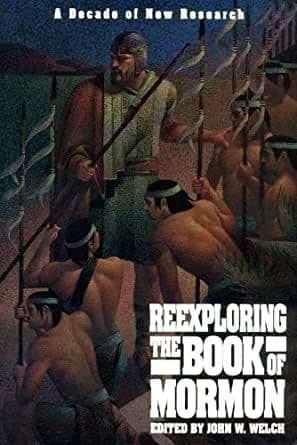Book
85 Chapters

Alma 7:10 “He shall be born of Mary, at Jerusalem which is the land of our forefathers.”
It has been alleged that the Book of Mormon commits a foolish error by predicting that Jesus would be born “at Jerusalem.” But just as Rome was urbs et orbis, “city and world,” so Jerusalem was not simply a city, not even just a city-state. It is and was a symbol of Zion. It typified all that which the exiles in Babylonia had lost (see Psalms 137:5-6), and, in our time, it is the focus of the return of other exiles from their nearly two millennia of dispersion. Every synagogue faces Jerusalem—the Holy City and City of David. In several ways, recent scholarship strongly confirms and elaborates upon the excellent older studies by professors Sperry and Nibley answering the critics on how Jerusalem could be called the place of Jesus’ birth.1
With the rise of the classical Israelite state, the role of the hereditary tribes declined, and the monarchy imposed administrative districts upon the nation: twelve in the North, and twelve in the South. The delineation of these districts is available in the Bible (see Joshua 15:20-63 [Septuagint]; 1 Kings 4:7-19), and Bethlehem was included in the district of Jerusalem.2
In the same way that the “land” or district of Jerusalem was administratively distinguished from the city of Jerusalem, so, according to Kenneth Kitchen, the great city of Hazor (Tell el-Qeda) was distinguished from the state of Hazor. Thus, Abraham had dwelt or “sojourned” in the territory of Gerar, rather than in the city itself (Tell Abu Hureira; Genesis 20:1). The “city and state often have the same name in the Ancient Orient, although distinct entities. This applied to Carchemish in Hittite politics, for example, where city and land (same name) had distinct roles.”3 Indeed, the land of Jerusalem ultimately extended far beyond mere district borders during its phase as a Latin kingdom, covering about 500 to 550 square kilometers.4
Thus it is quite apparent that Jerusalem “did double duty as the royal and the district capital.”5 As early as Canaanite times, Jerusalem held royal status, and it was termed mat URU sa-lim (“land of Jerusalem”) in the Amarna Letters.6
Where then was Jesus born? Truly, in Bethlehem of the land of Judaea (see Micah 5:2; Matthew 2:1-6; Luke 2:4)—any child could tell you that in Joseph Smith’s time as well as in ours. What no one in modern times would have known for sure (before the 1887 discovery of the Tell El-Amarna Tablets) was that Bethlehem was also part of an area anciently called the land of Jerusalem.7
Only once in the King James Bible is the term land of Jerusalem even remotely recognizable, and then within a parallel phrase: “And the king and his men went to Jerusalem unto the Jebusites, the inhabitants of the land” (2 Samuel 5:6). This verse is obviously insufficient to suggest to Joseph Smith how “lands” were constituted in Old Testament times. Yet the Book of Mormon twice refers to a “land of Jerusalem” in which Jesus was to be born (Alma 7:10; Helaman 16:19). This is consistent with the broader pattern of toponymy that appears in the Book of Mormon (i.e., the lands and cities of Nephi and Zarahemla).
It is apparent now that the Book of Mormon’s casual statements about the “land of Jerusalem” are in full agreement with what recent scholarship tells us about the geography of ancient Judaea.
Based on research by Robert F. Smith, May 1984.
1. Sidney B. Sperry, “Was Jesus Born in the ‘Land of Jerusalem,'” in Answers to Book of Mormon Questions (Salt Lake City: Bookcraft, 1967), 131-36; Hugh W. Nibley, An Approach to the Book of Mormon, in The Collected Works of Hugh Nibley (Salt Lake City: Deseret Book and F.A.R.M.S., 1988), 6:102.
2. As discussed by John Bright, A History of Israel, 3rd ed. (Westminster: Philadelphia, 1981), 221-22. Anson F. Rainey, “The Biblical Shephelah of Judah,” Bulletin of the American Schools of Oriental Research 251 (1983): 68, provides a map and discussion of the districts of Judah, including district 9, which contained such towns as Zobah, Manahath, Bether, Peor, Etam, Tekoa, Beth-haccerem, Bahurim, Netophah, Kullani, Tatam, Gallim, Bethlehem, and their district capital, Jerusalem.
3. Kenneth A. Kitchen, Ancient Orient and Old Testament (London: Tyndale, 1966), 68, and n. 43; The Bible in Its World: The Bible and Archaeology Today (Inter-Varsity Press, 1979; Paternoster Press, 1977), 40, 53 n. 9. Asshur was also a capital city and a state.
4. See Dan Barag, “A New Source Concerning the Ultimate Borders of the Latin Kingdom of Jerusalem,” Israel Exploration Journal 29 (1979): 197-217.
5. Yohanan Aharoni, The Archaeology of the Land of Israel: From the Prehistoric Beginnings to the End of the First Temple Period, ed. Miriam Aharoni, trans. A. F. Rainey, (Philadelphia: Westminster, 1982), 259.
6. Nos. 287:25, 46; 290:15.
7. The Macmillan Bible Atlas, 2nd ed. (New York: Macmillan, 1977), Map 39.
Book
85 Chapters
Items in the BMC Archive are made publicly available for non-commercial, private use. Inclusion within the BMC Archive does not imply endorsement. Items do not represent the official views of The Church of Jesus Christ of Latter-day Saints or of Book of Mormon Central.